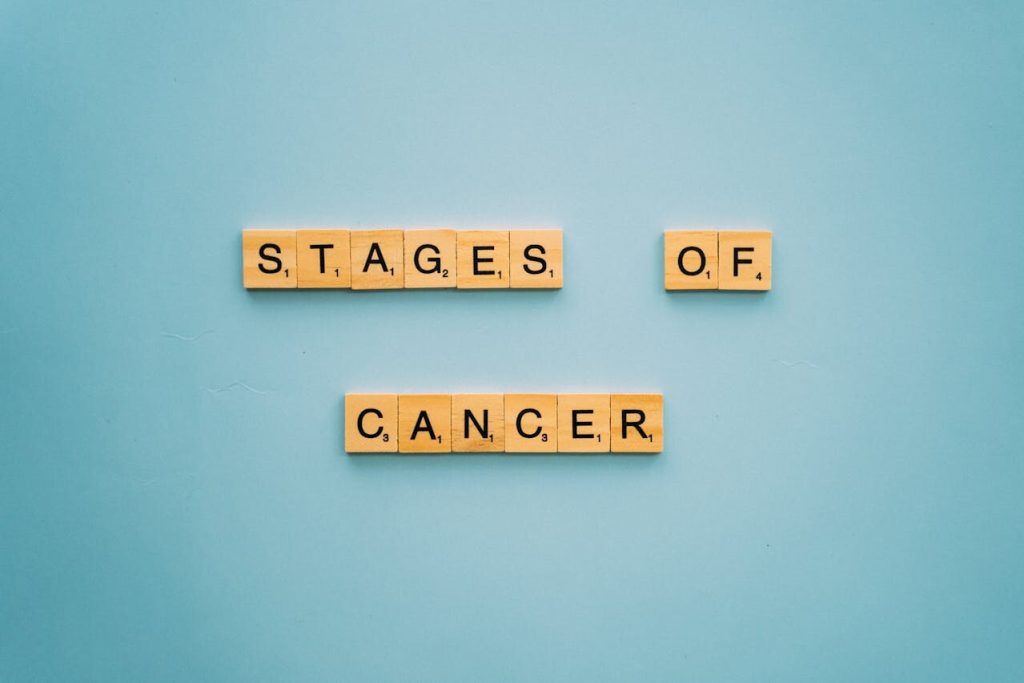While both warts and skin cancer can present as abnormal growths on the skin, they are distinct conditions with different characteristics and risks. It is crucial to be able to distinguish between the two for proper diagnosis and treatment.
Key Takeaways:
- Warts and skin cancer are different conditions with distinct characteristics and risks.
- Different types of warts include common warts, plantar warts, and genital warts.
- Skin cancer can be basal cell carcinoma, squamous cell carcinoma, or melanoma.
- Early detection of warts and skin cancer is important for prompt medical attention.
Understanding Warts
Warts are abnormal growths on the skin caused by a viral infection in the top layer of the skin. They are common and can be transmitted through direct contact with a wart-infected person or by walking barefoot in damp environments such as public pools or locker rooms.
The common warts, plantar warts, and genital warts are the three main types of warts. Common warts are usually found on fingers, hands, and elbows, while plantar warts develop on the soles of the feet and can be quite painful. Genital warts are a sexually transmitted infection and commonly found on the genital area, anus, or mouth.
Warts typically appear as raised bumps with a rough texture on the surface and can vary in size and shape. They may also have small black dots on the surface, which are clotted blood vessels. While warts are generally harmless, they can be uncomfortable or embarrassing and may require treatment if they interfere with daily activities or cause pain.
Understanding Warts: Causes and Symptoms
Warts are caused by the human papillomavirus (HPV), which enters the body through a break in the skin. The virus can be transmitted through direct contact with an infected person or an object that carries the virus. People with weakened immune systems are more susceptible to developing warts.
The common symptoms of warts are small, raised bumps on the skin with rough texture. They can appear on any part of the body but are most commonly found on the hands, feet, and face. Occasionally, warts may also cause itching, bleeding, or pain.
It is important to note that warts can sometimes resemble skin cancer, especially squamous cell carcinoma. Therefore, it is essential to seek professional medical evaluation for accurate diagnosis and treatment.
Recognizing Skin Cancer
Skin cancer is a serious condition that can affect anyone, regardless of age, gender, or skin tone. There are several types of skin cancer, including basal cell carcinoma, squamous cell carcinoma, and melanoma. Early detection is crucial for successful treatment, making it essential to recognize the signs and symptoms of skin cancer.
One of the most common signs of skin cancer is the appearance of new growths or changes to existing moles or spots on the skin. These changes may include changes in size, shape, or color, or the development of unusual textures or bleeding. Additionally, any sore that doesn’t heal or seems to be getting worse over time should be examined by a medical professional.
It is important to note that skin cancer can occur anywhere on the body, including areas that receive little or no sun exposure. Therefore, it is important to regularly check the skin for any abnormalities, including areas that are not typically exposed to the sun.
Differences in Appearance
While both warts and skin cancer can appear as abnormal growths on the skin, they have distinct characteristics that can help differentiate between the two. Warts typically appear as raised bumps with a rough texture and can have a more uniform appearance. On the other hand, skin cancer may present as abnormal growths, changes in existing moles, or non-healing sores. Skin cancer growths are often asymmetrical, meaning that one half does not match the other half.
It is important to note that not all skin growths are cancerous. However, if you notice any unusual changes in the size, shape, or color of a growth, or if it bleeds or becomes painful, you should seek medical attention immediately. Early detection and prompt treatment can improve the chances of successful recovery.
Risk Factors for Warts
Warts are a common skin condition caused by viral infections, but some individuals are more susceptible to them than others. Understanding the risk factors for warts can help prevent their development and transmission.
- Weakened immune system: Individuals with weakened immune systems, such as those with HIV/AIDS or undergoing chemotherapy, are more likely to develop warts.
- Direct contact with a wart-infected person: Warts are highly contagious and can be transmitted through skin-to-skin contact with an infected person.
- Walking barefoot in damp environments: Warts thrive in warm, moist environments, making communal spaces such as locker rooms and swimming pools a common source of transmission.
- Age: Children and young adults are more likely to develop warts, possibly due to a less developed immune system and increased exposure to communal environments.
- Predispositions: Some individuals may be genetically predisposed to developing warts, as they are more likely to inherit a weakened immune system or susceptibility to infection.
While anyone can develop warts, individuals with risk factors should take extra precautions to avoid transmission and seek prompt medical attention if necessary.
Risk Factors for Skin Cancer
Several factors can increase the risk of developing skin cancer:
- Excessive exposure to UV radiation from the sun or tanning beds
- Having fair skin, freckles, or light-colored eyes
- A history of sunburns or skin cancer
- Living in areas with high levels of UV radiation
- A weakened immune system
- Exposure to certain chemicals or radiation
- Having a family history of skin cancer
It’s important to note that anyone can develop skin cancer, regardless of skin color or ethnicity. However, certain groups, such as individuals with fair skin, are at higher risk.
Diagnostic Procedures
Proper diagnosis is essential for distinguishing between warts and skin cancer. Warts are often diagnosed through physical examination, as they have a distinct appearance and texture. Skin cancer, on the other hand, may require a biopsy or other tests for confirmation.
If you suspect you have a wart or skin cancer, it is crucial to seek professional medical evaluation for accurate diagnosis. A dermatologist or oncologist can perform a thorough examination and recommend further tests if necessary.
Treatment Options for Warts
There are several treatment options available for warts, depending on their location and severity. Mild cases of warts may resolve on their own without any intervention. However, persistent or painful warts may require medical treatment. Here are some commonly used wart treatments:
| Treatment | Description |
|---|---|
| Over-the-counter medications | Topical creams or gels containing salicylic acid or other active ingredients that dissolve the wart over time |
| Cryotherapy | Freezing the wart with liquid nitrogen, causing it to fall off within a week or two |
| Laser therapy | Using a laser to destroy the wart tissue |
| Surgical removal | Cutting or scraping off the wart under local anesthesia |
In addition to these conventional treatments, the Cancer Center for Healing offers holistic approaches to treating warts. Dr. Leigh Erin Connealy takes an integrative and personalized approach to cancer care, using a combination of natural therapies, such as vitamin and mineral supplements, immune-boosting therapies, and nutritional counseling. These approaches aim to not only treat the wart but also enhance the body’s natural healing abilities and prevent future outbreaks.
Treatment Options for Skin Cancer
Skin cancer treatment options depend on the type, stage, and location of the cancer. The Cancer Center for Healing offers a comprehensive approach to cancer care, with a focus on individualized treatment plans and holistic modalities.
Surgery is a common form of treatment for skin cancer, including removal of the cancerous tissue and sometimes surrounding healthy tissue. Radiation therapy may be used to destroy cancer cells, while chemotherapy targets cancer cells throughout the body.
Immunotherapy and targeted therapy are newer forms of treatment that work by stimulating the body’s immune system or targeting specific cancer cells. These treatments are often used for advanced or metastatic skin cancer and may have fewer side effects than traditional chemotherapy.
At the Cancer Center for Healing, Dr. Leigh Erin Connealy may also recommend complementary therapies such as nutrition counseling, acupuncture, and detoxification to support the body’s natural healing process and reduce the risk of recurrence.
Prevention and Risk Reduction
Preventing warts and reducing the risk of skin cancer requires a proactive approach. It is essential to follow good hygiene practices to reduce the chances of contracting warts, avoid direct contact with infected individuals, and wear gloves or shoes in damp areas to protect the feet.
For skin cancer prevention, it’s crucial to limit exposure to the sun and use sunscreen with an SPF of at least 30. Wearing protective clothing such as long-sleeved shirts and hats, seeking shade during peak sun hours (10 am to 4 pm), and avoiding tanning beds can also help reduce the risk of skin cancer.
Regularly checking the skin for any changes, such as new growths or changes in existing moles, is also essential. If you notice any concerning changes, seek prompt medical attention.
Leading a healthy lifestyle, such as maintaining a balanced diet, exercising regularly, and reducing stress, can also support overall skin health. Remember to consult a healthcare provider for personalized advice and guidance on skin health and cancer prevention.
Importance of Regular Skin Checks
Regular skin checks are crucial for early detection of both warts and skin cancer. Self-examinations and annual dermatologist visits are highly recommended, especially for individuals with risk factors or a history of skin conditions.
It’s essential to be aware of any changes in the skin’s appearance, such as new growths, changes in existing moles, or sores that don’t heal. Early detection increases the chances of successful treatment and reduces the risk of complications.
If you notice any concerning changes in your skin, it’s crucial to take prompt action and seek professional medical attention. Don’t wait until it’s too late.
Seeking Professional Help
While self-examinations and preventive measures are important, it is crucial to seek professional medical help for accurate diagnosis, effective treatment, and comprehensive guidance. If you notice any concerning changes in your skin, such as abnormal growths, changes in moles, or non-healing sores, do not hesitate to consult a dermatologist or healthcare provider.
If you are looking for holistic cancer care and individualized treatment plans, consider visiting the Cancer Center for Healing in Irvine, CA. Under the care of Dr. Leigh Erin Connealy, a renowned integrative medical doctor and cancer specialist, the center offers a range of innovative and evidence-based therapies to enhance your immune system, support your body’s natural healing processes, and improve your quality of life.
| Location: | Irvine, CA |
|---|---|
| Contact: | 949-680-1880 |
| Website: | www.cancercenterforhealing.com |
Do not wait until it is too late. Take action now for your skin health and overall well-being. Book a consultation with the Cancer Center for Healing today and get the support you need to overcome any health challenges.
Conclusion
Being able to differentiate between warts and skin cancer is crucial for proper diagnosis and treatment. While both conditions may appear as abnormal growths on the skin, they have distinct characteristics and risks. Warts are caused by viral infections and can be transmitted through direct contact or exposure to damp environments. Skin cancer, on the other hand, can be caused by excessive sun exposure or genetics.
Early detection is vital for both warts and skin cancer. Regular self-examinations and dermatologist visits can help identify any concerning changes. Treatment options for warts include over-the-counter medications, cryotherapy, laser therapy, or surgical removal. At the Cancer Center for Healing in Irvine, CA, a holistic approach is taken towards cancer care, offering comprehensive treatment options for all types of cancer.
Treatment options for skin cancer depend on the type, stage, and location of the cancer and may include surgery, radiation therapy, chemotherapy, immunotherapy, or targeted therapy. Prevention and risk reduction strategies can help reduce the risk of both warts and skin cancer, such as using sunscreen, wearing protective clothing, and practicing good hygiene.
Seeking professional medical help is crucial for proper diagnosis, treatment, and guidance. The Cancer Center for Healing, under the care of Dr. Leigh Erin Connealy, offers comprehensive cancer care in Irvine, CA. It is important to take proactive steps for skin health and overall well-being.
FAQ
Q: What are the key differences between warts and skin cancer?
A: Warts and skin cancer are both abnormal growths on the skin, but they have distinct characteristics and risks. Warts are caused by viral infection and appear as raised bumps with a rough texture. Skin cancer, on the other hand, can present as abnormal growths, changes in existing moles, or non-healing sores. It is important to be able to distinguish between the two for proper diagnosis and treatment.
Q: What are the causes and symptoms of warts?
A: Warts are typically caused by viral infection, and common symptoms include raised bumps with a rough texture. They can be transmitted through direct contact with an infected person or in damp environments. There are different types of warts, such as common warts, plantar warts, and genital warts.
Q: How can skin cancer be recognized?
A: Skin cancer can manifest in various types, including basal cell carcinoma, squamous cell carcinoma, and melanoma. Signs of skin cancer include changes in moles, new growths, or sores that don’t heal. Early detection and timely medical attention are crucial.
Q: What are the differences in appearance between warts and skin cancer?
A: Warts typically have a uniform appearance and appear as raised bumps with a rough texture. Skin cancer, on the other hand, may present as abnormal growths, changes in existing moles, or non-healing sores. Skin cancer may also be asymmetrical in shape.
Q: What are the risk factors for developing warts?
A: Risk factors for developing warts include a weakened immune system, direct contact with a wart-infected person, or walking barefoot in damp environments. While anyone can develop warts, some individuals may be more predisposed to them.
Q: What are the risk factors for skin cancer?
A: Excessive sun exposure without protection is a significant risk factor for skin cancer. Other factors include fair skin, a family history of skin cancer, and exposure to certain chemicals or radiation.
Q: How are warts and skin cancer diagnosed?
A: Warts are often diagnosed through physical examination, while skin cancer may require a biopsy or other tests for confirmation. It is essential to seek professional medical evaluation for accurate diagnosis.
Q: What are the treatment options for warts?
A: Treatment options for warts include over-the-counter medications, cryotherapy, laser therapy, or surgical removal. The Cancer Center for Healing in Irvine, CA, under the care of Dr. Leigh Erin Connealy, also offers holistic treatment modalities for warts.
Q: What are the treatment options for skin cancer?
A: Treatment options for skin cancer include surgery, radiation therapy, chemotherapy, immunotherapy, or targeted therapy. Individualized treatment plans are based on the type, stage, and location of the cancer.
Q: How can warts and skin cancer be prevented?
A: To prevent warts, it is recommended to practice good hygiene, avoid direct contact with warts, and maintain a healthy lifestyle. To reduce the risk of skin cancer, sun protection measures such as using sunscreen, wearing protective clothing, and regularly checking the skin for changes are important.
Q: Why are regular skin checks important?
A: Regular skin checks are crucial for early detection of both warts and skin cancer. Self-examinations and annual dermatologist visits are recommended, especially for individuals with risk factors or a history of skin conditions. Prompt action should be taken if any concerning changes are noticed.
Q: How can one seek professional help for skin conditions?
A: It is important to seek professional medical help for proper diagnosis, treatment, and guidance. The Cancer Center for Healing in Irvine, CA, led by Dr. Leigh Erin Connealy, specializes in holistic cancer care. Schedule a consultation at the center for comprehensive treatment options.






